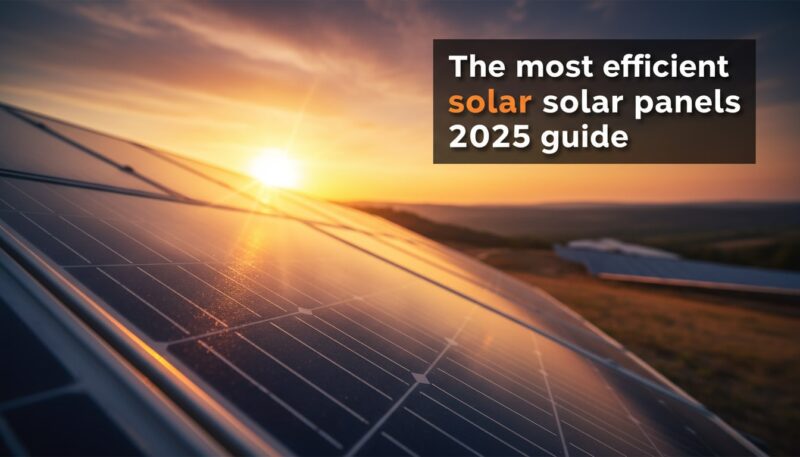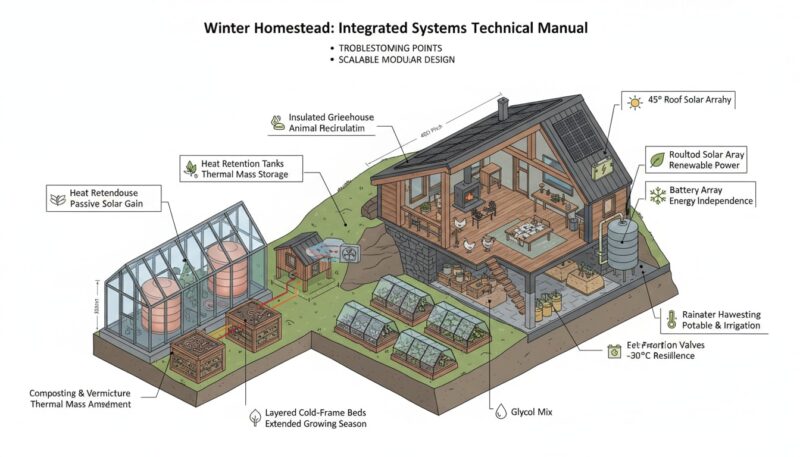
Federal solar incentives drive solar energy usage across the nation. Homeowners benefit from the Residential Clean Energy Credit, which provides notable savings through tax credits for solar installations.
This program supports solar expansion, helping families lower energy bills.
Knowing how these incentives function allows investment in solar energy systems and potential savings of thousands.
Click here to learn more about: how to make homemade soap at home
Understanding The Residential Clean Energy Credit
The Residential Clean Energy Credit offers a 30% tax credit for eligible solar panel installations.
This credit significantly reduces solar installation costs. The Investment Tax Credit currently applies to installations completed between 2022 and
After that, it drops to 26% in 2033 and 22% in Homeowners can maximize savings through increased energy efficiency.
Key Benefits
- 30% tax credit for new installations.
- No maximum cap on the credit amount.
- Available for both residential and commercial properties.
- Only system owners can claim it; leases don’t qualify.
- Unused credits roll over to future tax years.
- Includes eligible expenses like solar PV panels, installation labor, and qualified solar batteries of 3 kWh or more.
Documentation for Tax Purposes
Keeping thorough records of solar installation costs is essential. Necessary documentation includes expenses on materials and labor. Complete IRS Form 5695 when you file your taxes to claim the credit. System ownership is a requirement for claiming benefits.
Utilizing the Residential Clean Energy Credit supports solar technology adoption and promotes energy independence initiatives. Homeowners can achieve substantial tax savings and contribute to sustainable energy solutions.

What Is The Investment Tax Credit
The Investment Tax Credit (ITC) is a federal tax incentive that boosts investments in solar energy systems. This tax credit covers 30% of installation costs for projects started between 2022 and 2032.
Reducing financial barriers helps many homeowners and businesses invest in sustainable energy solutions.
Property owners can save thousands on solar installations.
The ITC not only offers immediate financial benefits but also shapes long-term energy strategies.
It encourages decisions focused on future energy efficiency and clean technology investments.
Benefits Of Solar Panel Installation
Many benefits come with installing solar panels. These advantages include both environmental improvements and potential tax savings.
By using solar energy systems, homeowners reduce their reliance on fossil fuels, resulting in a smaller carbon footprint.
Homeowners can access federal and state rebates, enhancing their financial incentives. The Residential Clean Energy Credit allows homeowners to lower installation costs through tax credits.
- Solar PV panels are eligible for tax benefits.
- Installation labor and permitting expenses qualify.
- Batteries with a capacity of 3 kWh or higher are covered.
When assessing return on investment, compare total expenses against savings from reduced energy bills over time. This analysis helps determine the best approach for maximizing solar energy savings.
Solar Energy Investment
- The ITC can save homeowners and businesses up to 30% on solar installation costs.
- Solar energy systems significantly reduce greenhouse gas emissions, contributing to a cleaner environment.
- Homeowners who install solar panels can benefit from both federal and state financial incentives.
- Investing in solar energy can lead to long-term savings on energy bills, enhancing overall financial returns.
Exploring Renewable Energy Tax Benefits
Renewable energy tax benefits support homeowners in choosing clean energy solutions. Various incentives exist beyond solar, including wind and geothermal projects.
These tax benefits help promote sustainable energy practices.
For instance, wind energy incentives allow homeowners to receive grants and tax credits for their wind projects.
Geothermal heat pumps also qualify for tax credits, similar to solar systems, encouraging energy efficiency.
To maximize available credits, homeowners should follow a simple checklist: assess energy needs, hire licensed installers, maintain records, and research local programs.
This approach enhances solar energy savings and expands clean energy adoption.
How To Determine Tax Credit Eligibility
Tax credit eligibility is important for homeowners who want to benefit from renewable energy incentives. Key criteria include ownership of the system, meaning only those who own their installations can claim the credits.
Ensure your installation is complete during eligible tax years, specifically from 2022 to 2032.
Consulting with tax professionals is highly recommended for personalized advice.
They can assist in navigating the complexities of IRS Form 5695.
Be aware of common pitfalls, such as missing deadlines or claiming ineligible expenses, which can affect your tax savings. Taking these steps ensures you maximize available homeowners tax benefits.
The Residential Clean Energy Credit, previously known as the Investment Tax Credit, offers significant federal tax benefits for installing solar energy systems.
This federal solar incentive currently covers 30% of the cost for new solar installations placed in service from 2022 through 2032. After 2032, it will drop to 26% in 2033 and 22% in 2034.
There is no maximum cap on claims, and no income limit for eligibility.
Unused credits can roll over to future tax years if your credit exceeds your tax liability.
Only system owners are eligible for the credit; leases do not apply. Eligible expenses include solar PV panels, inverters, mounting equipment, wiring, installation labor, permitting, and qualified solar batteries of 3 kWh or higher.
Roof replacement and unrelated home upgrades do not qualify. This incentive is available to both residential and commercial installations, providing significant cost savings for qualifying solar projects.
Renewable Energy Tax Benefits
- Homeowners can receive a 30% federal tax credit for solar energy installations from 2022 to 2032.
- Wind and geothermal projects also qualify for grants and tax credits, promoting diverse clean energy solutions.
- Consulting with tax professionals can help navigate the complexities of claiming renewable energy tax credits.
- Unused tax credits can roll over to future tax years, maximizing potential savings for homeowners.
Insights On Solar Financing Options
Solar financing options help homeowners invest in solar energy systems. Leasing lets homeowners pay a monthly fee to use solar panels without owning them.
This option often requires little upfront payment.
Loans enable homeowners to buy their solar systems, building equity over time.
They may benefit from the Residential Clean Energy Credit, which can offset installation costs significantly. Power Purchase Agreements (PPAs) allow homeowners to pay for energy produced by a third-party-owned solar system.
Evaluating these financing options can lead to substantial tax savings and overall costs.
Benefits of Solar Financing Options
- Leasing: Little upfront cost and no maintenance responsibilities.
- Loans: Build equity and potentially benefit from the Residential Clean Energy Credit.
- PPAs: Fixed energy costs that can be lower than utility rates.
Each financing option has different tax savings and overall costs associated. Homeowners should compare terms carefully.
What Are Energy Storage Solutions
Energy storage solutions complement renewable energy systems effectively. Battery storage allows homeowners to store excess solar energy generated during the day for use during the night or cloudy days. This reduces reliance on the grid and supports energy independence initiatives. The Residential Clean Energy Credit may apply to battery installations with a capacity of 3 kWh or greater.
Benefits of Energy Storage Solutions
- Lower energy costs over time by using stored solar energy.
- Enhanced energy independence through reduced grid reliance.
- Potential eligibility for clean energy incentives.
Overall, energy storage systems improve sustainability and assist in energy transition incentives.
Solar Financing and Energy Storage
- Homeowners can save up to 30% on installation costs through the Residential Clean Energy Credit.
- Battery storage systems can reduce energy bills by storing solar energy for use during peak hours.
- Leasing options can have monthly payments as low as $50, making solar energy more accessible.
- PPAs can provide savings of 10-30% compared to traditional utility rates.
Navigating IRS Form 5695 For Tax Savings
IRS Form 5695 plays a key role in maximizing tax savings through solar energy investments. This form allows homeowners to claim the Residential Clean Energy Credit, covering 30% of solar installation costs.
Start by dividing the form into its two main parts: Part I deals with solar panel installations, while Part II includes energy-efficient home improvements.
Steps to Complete IRS Form 5695
To complete the IRS Form 5695, gather all required documents, such as receipts for solar equipment costs and installation labor.
Follow the instructions for each section closely to ensure accurate completion.
Accurate figures lead to successful claims and substantial tax savings. Check the tax credit eligibility criteria thoroughly to avoid mistakes before filing your federal tax return.
Understanding the Federal Solar Incentives
The Residential Clean Energy Credit, also known as the Investment Tax Credit, provides homeowners a significant tax benefit for installing solar energy systems.
This tax credit reduces federal income tax based on a percentage of qualified solar installation costs:
- The federal solar tax credit currently covers 30% of the cost for new solar installations from 2022 through 2032.
- It drops to 26% in 2033 and 22% in 2034.
- There is no maximum cap on the amount you can claim.
- No income limit exists for eligibility.
- The credit rolls over if it exceeds your tax liability for the installation year.
- System owners are eligible; this does not apply to leessees or PPA participants.
- Eligible expenses include solar PV panels, inverters, and qualified solar batteries of 3 kWh or greater.
- Roof replacements and unrelated home upgrades are not covered.
Claim the incentive by filling out IRS Form 5695 when filing your federal taxes. This incentive is available to both residential and commercial installations, allowing significant savings on solar installation costs.
IRS Form 5695 and Solar Tax Savings
- The Residential Clean Energy Credit covers 30% of solar installation costs from 2022 to
- There is no maximum claim limit, allowing homeowners to benefit fully from their solar investments.
- Eligible expenses include solar PV panels, inverters, and qualified solar batteries of 3 kWh or greater.
- The tax credit rolls over if it exceeds your tax liability, providing additional financial flexibility.





